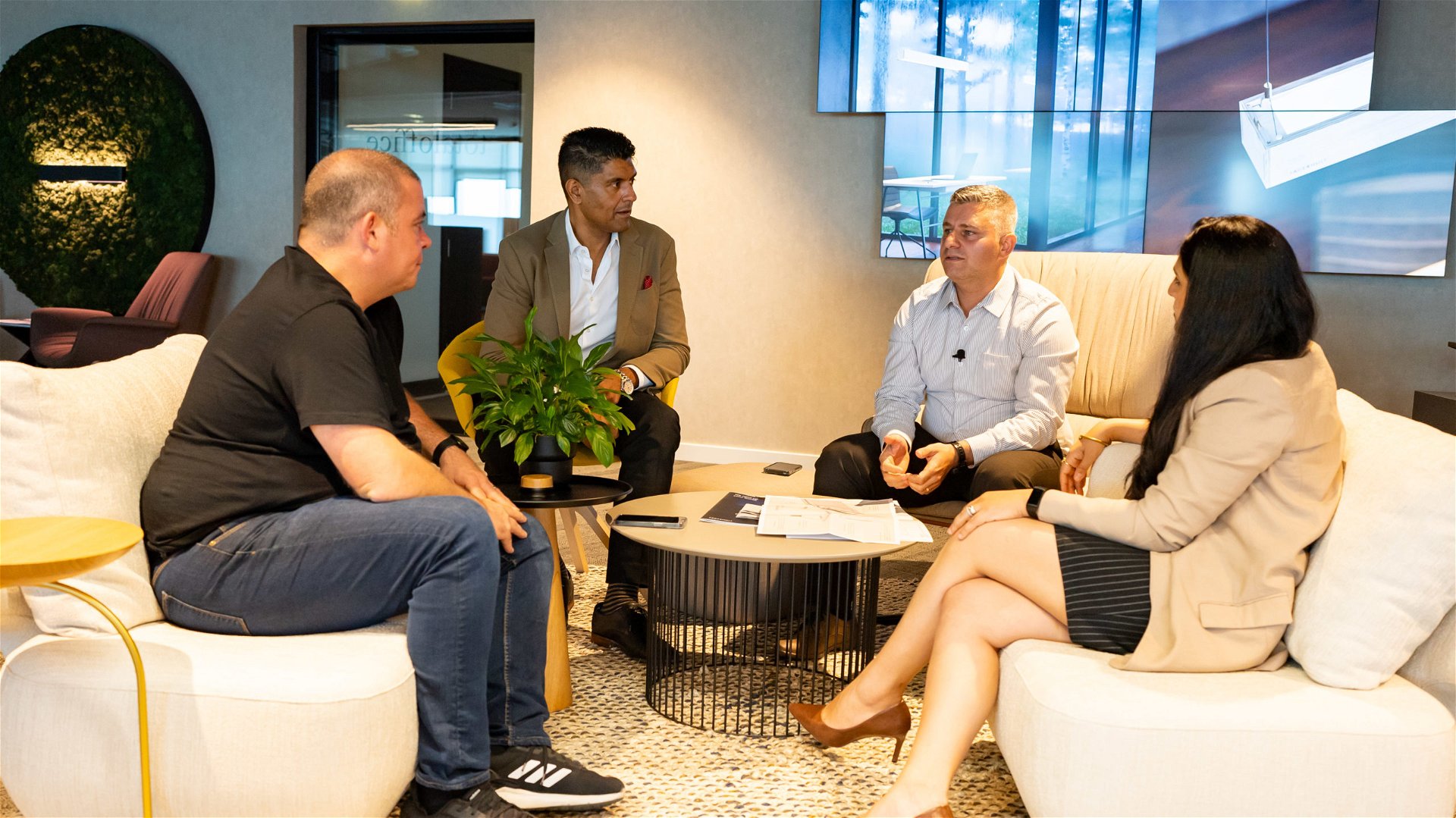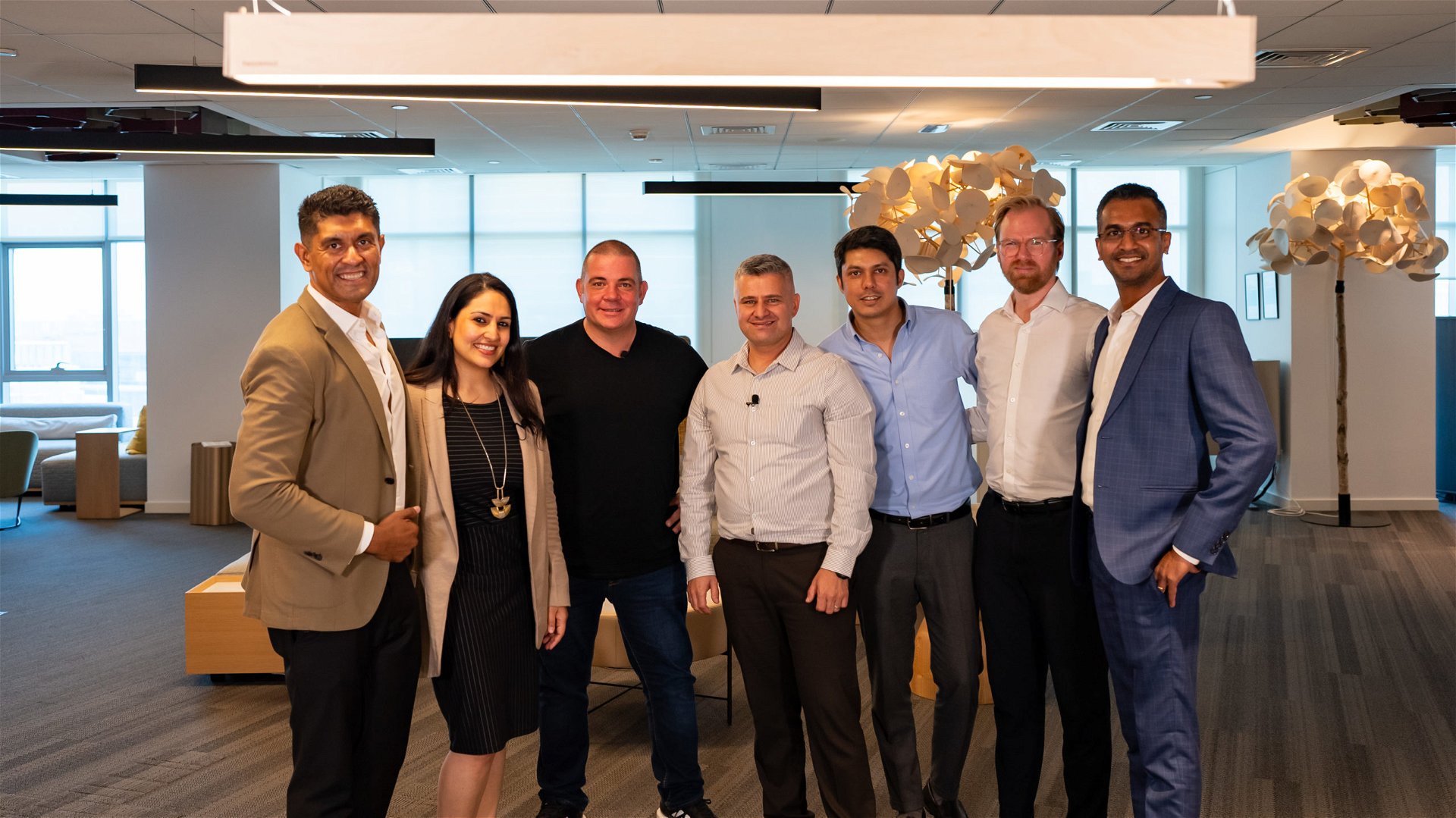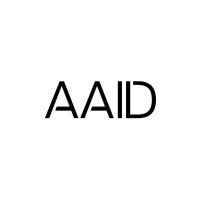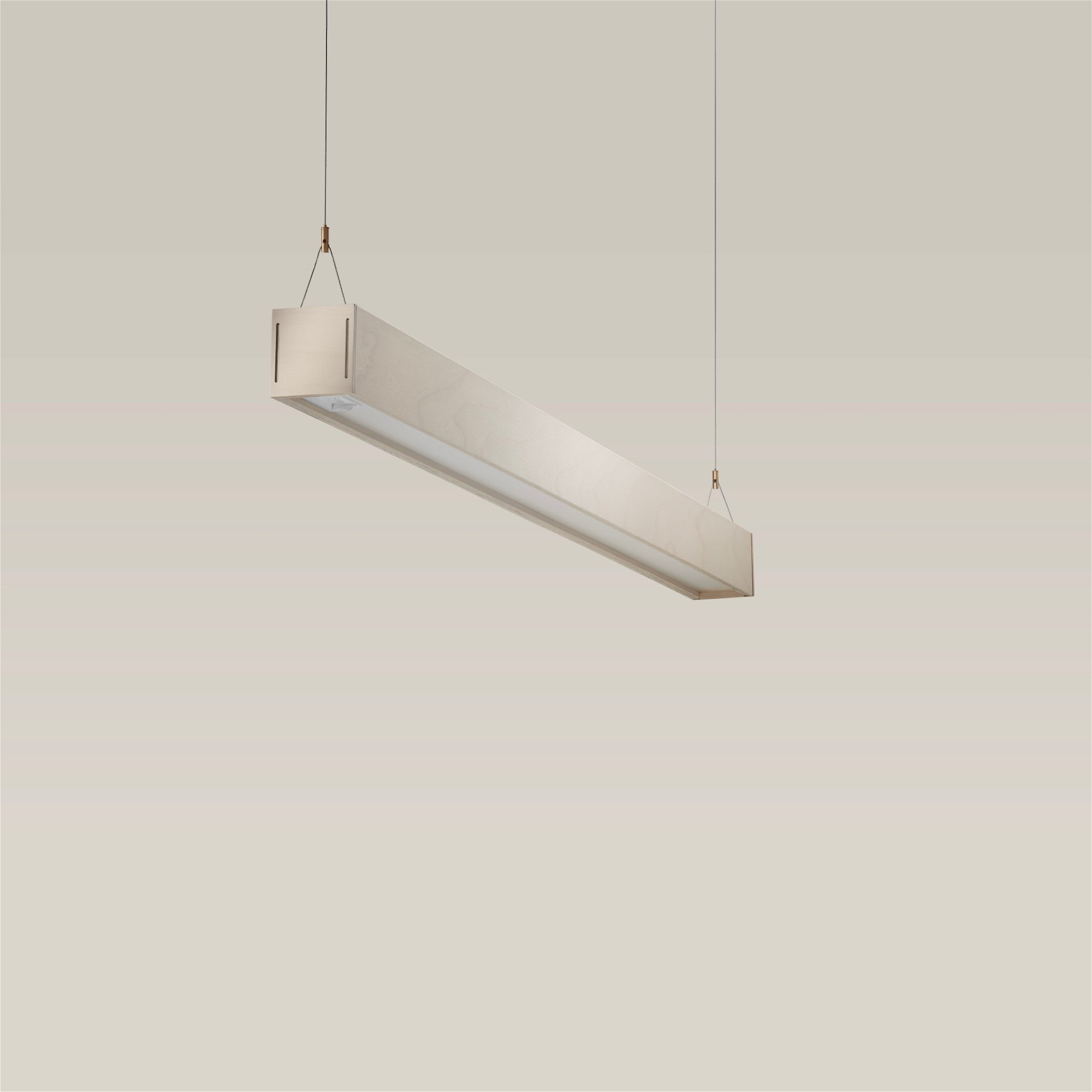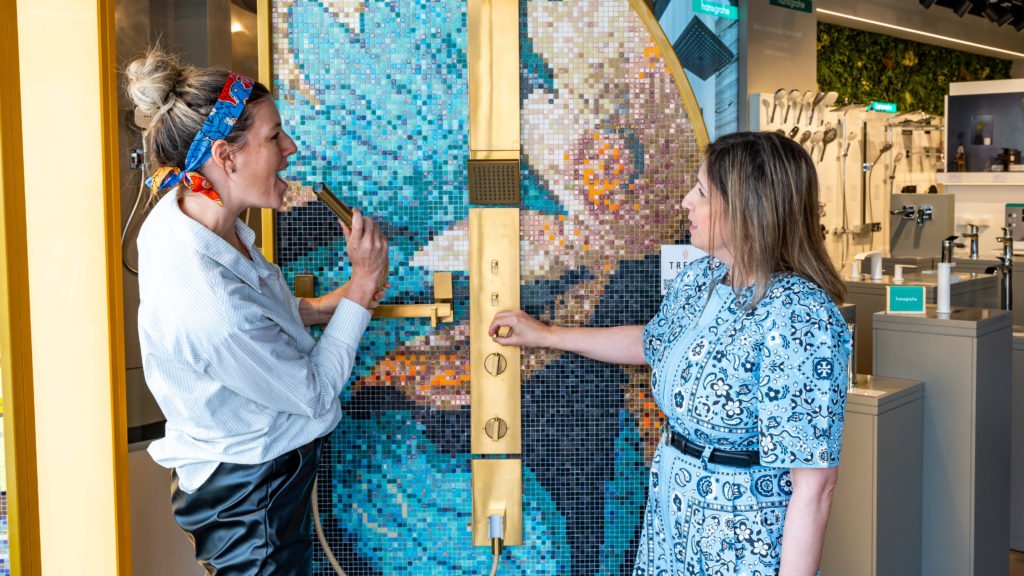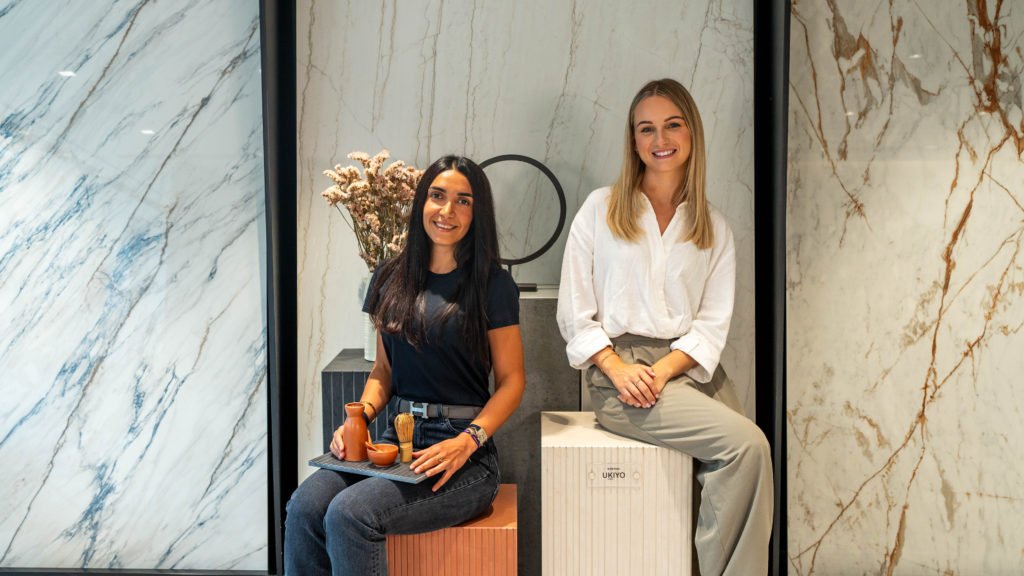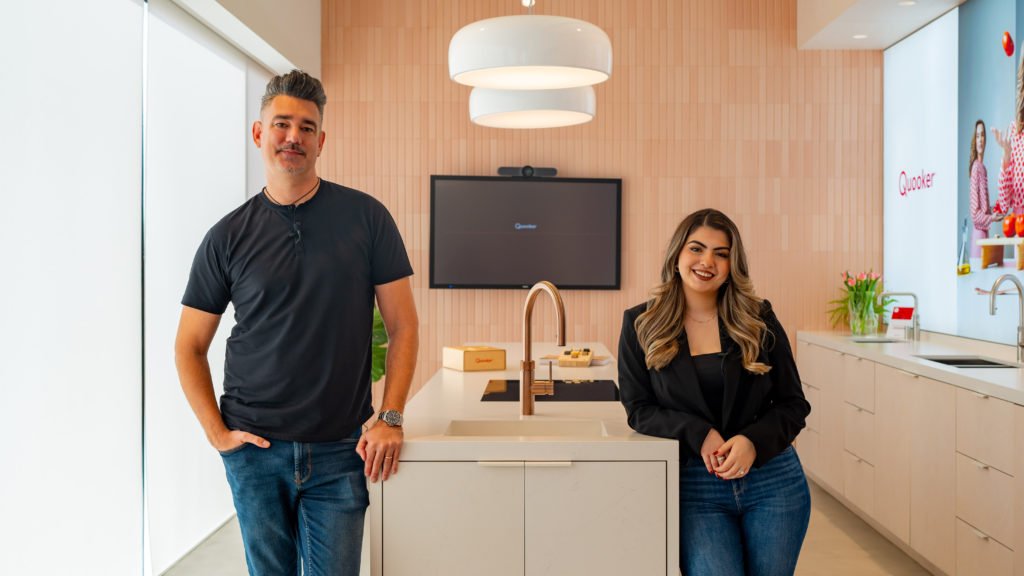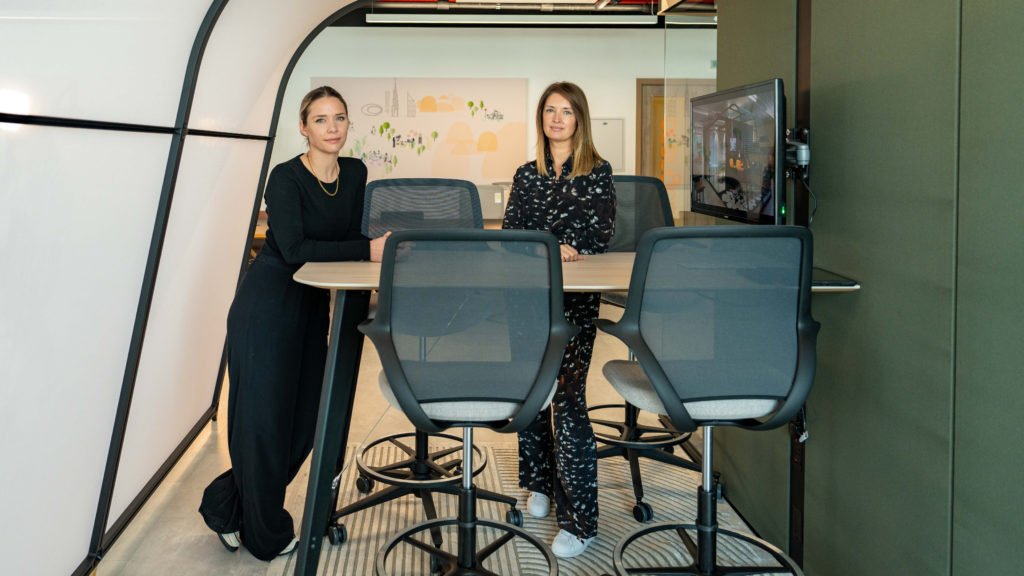Fagerhult’s Kvisten turns heads. Sleek, earthy and elegant, the pendant light is a refreshing take on materiality and sustainability of lighting products. Paul Miles, Principal Lighting Designer & Partner, Light Touch PLD and Mansi Tewari, Design Director, AAID had a closer look. Here’s what they said…
Fagerhult’s light-making history began as a small flame in the dark forests of Sweden. In 1943, Bertil Svensson, its founder, created his first lamp as a gift for his mother at Christmas time. Since then, the business has grown considerably.
Over the decades, Fagerhult’s consistency has rewarded them stability and a prosperous legacy. Mohammad Darwish, Sales Director at Fagerhult MENA remarks, “We’re a total of 11 brands today; whether it’s hospitality, healthcare or education; we have lighting solutions for everything.” Trace back to their history and it’s apparent that the brand’s secret to remaining relevant has been perpetual goal-setting. It not only keeps the Fagerhult team inspired, but also motivates them to go above and beyond.
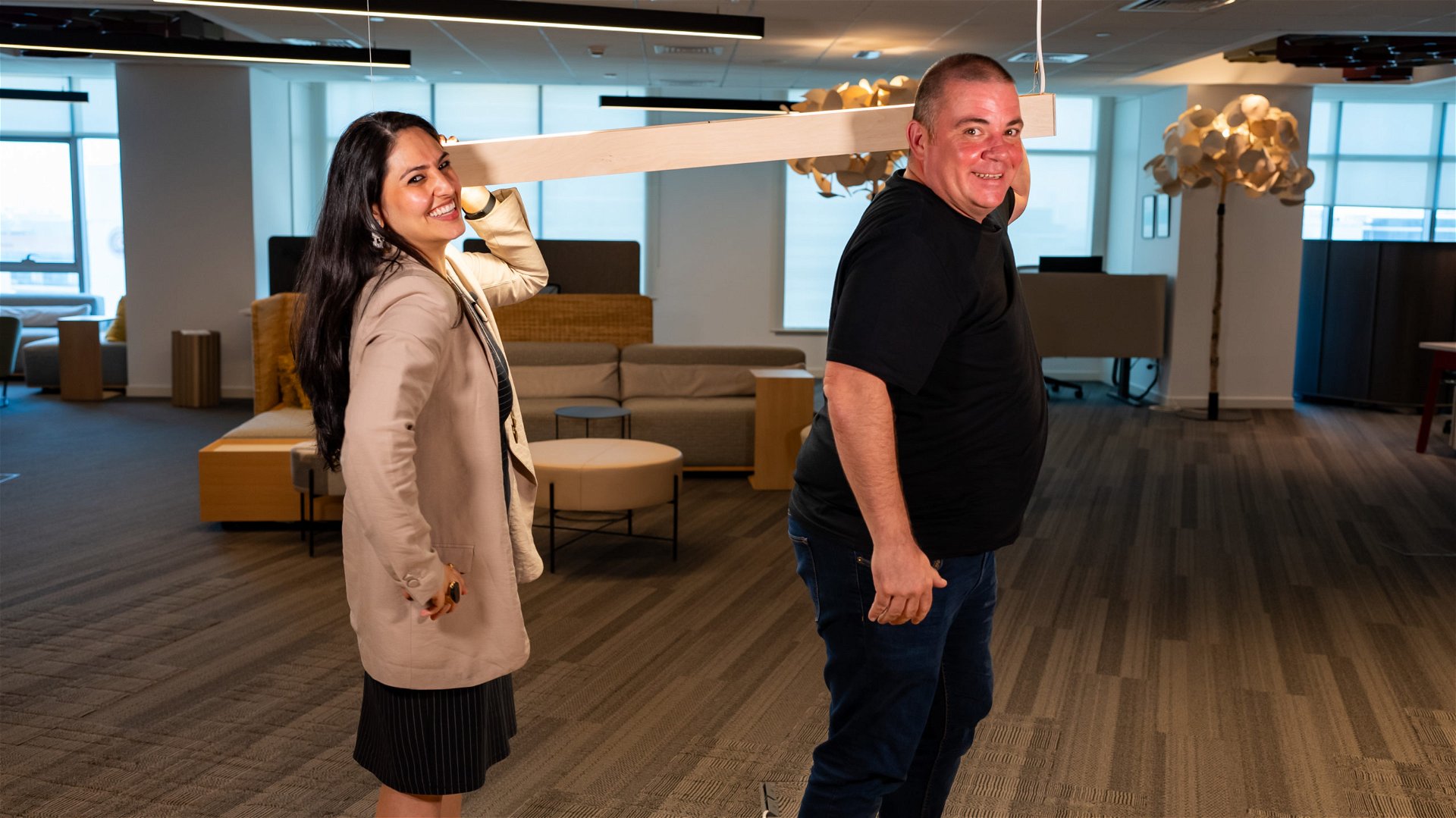
For instance, Fagerhult’s mission today is to champion well-being and creativity with its product range. One of the company’s objectives stipulates that all new products need to be made of renewable or recycled materials by 2030. With Kvisten, a product made of 77% recyclable or renewable wood, Fagerhult is charging towards that ambition with full throttle.
That being said, sustainability is a target for most brands. Nonetheless, what becomes a marker of excellence in this race is continuing to innovate with mechanisms and aesthetics simultaneously. Does Fagerhult’s Kvisten succumb to this challenge or does it take it in its stride?
The Review Crew
From left to right: Paul Miles, Principal Lighting Designer & Partner, Light Touch PLD; Mansi Tewari, Design Director, AAID
A Balance of Rustic and Modern
The Kvisten is a linear pendant that is distinctly natural, sophisticated and Scandinavian in appearance. Currently available in a standard size of 1200 mm, its diffusers use 40% less plastic than usual. It is predominantly constructed in 100% Forest Certified pine plywood finished in birch veneer and Mohammed tells us why- “The name Kvisten translates to tree branch in Swedish. Thus, it’s made out of pinewood plywood, as the material holds up against humidity and doesn’t bend over time.” Wires and wire locks of the luminaire have been left bare, exposing the original brass for added allure. Kvisten packs a punch in a popular clean, streamlined shape.
Paul: “Honestly, my first impression was the natural look and feel of the product. The craftsmanship of it, with respect to the buildability and the lack of traditional fixings like screws etcetera, is super impressive.”
Mansi: “My first impression is that it’s sleek and beautiful. The use of the natural pinewood is well done. And of course, the construction of it is unique and its simplicity adds to its chicness. This product looks so simple and is so far from the standard aluminium box fixture. The fact that the wood is real, not something that’s been printed on makes it a refreshing piece of design.”
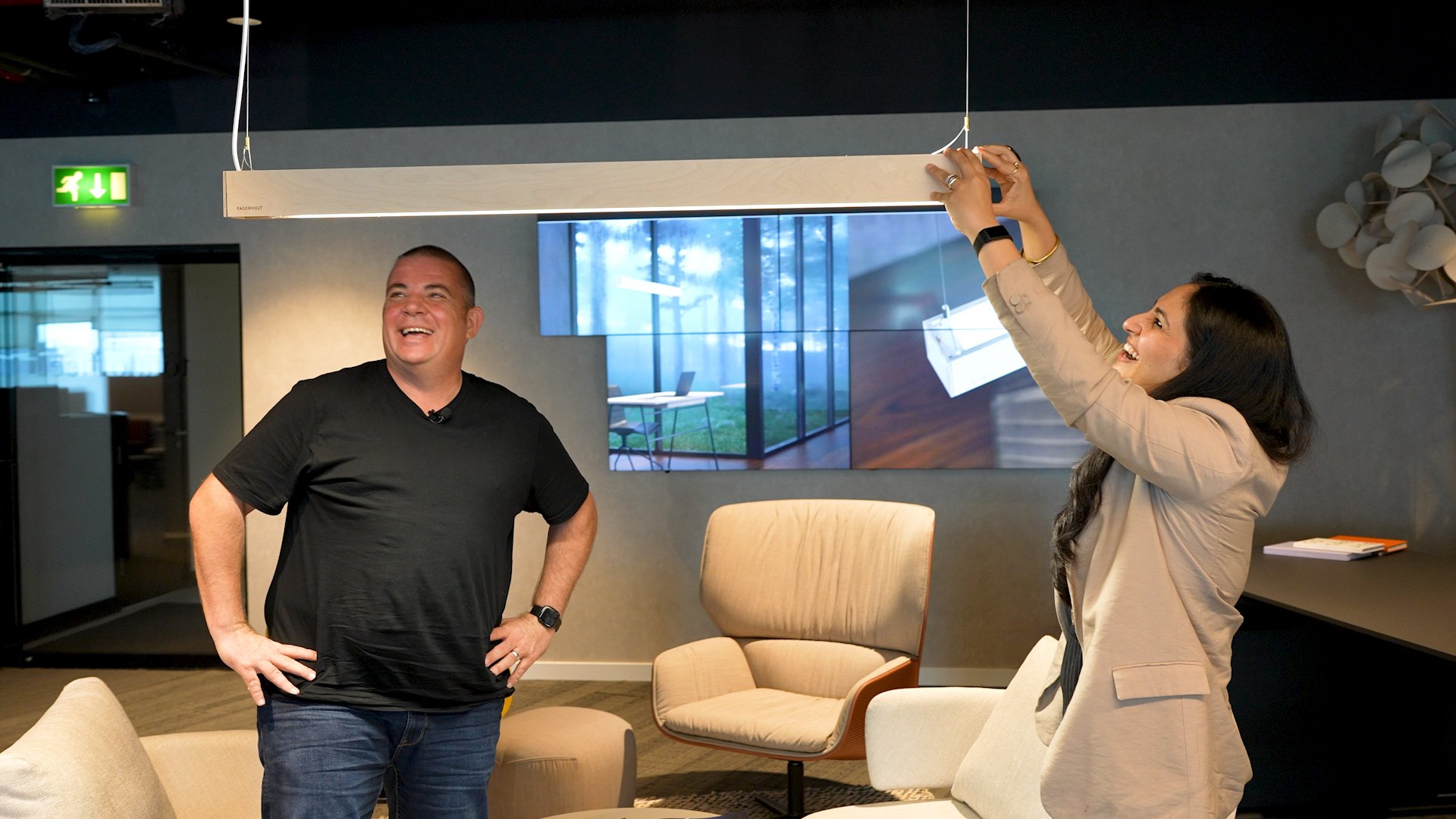
Designed to Provide an Instinctive Response
Given that the fixture is primarily envisioned for office spaces, efficiency and response to variable stimuli have been pronounced in the product. Kvisten has been coupled with Organic Response, Fagerhult’s patented intelligent networking system. All products on the system can communicate with each other as soon as they are plugged into power.
“Organic Response is the world’s most elegant wireless system because it comes built into the fitting. It’s ready to go,” informs Mohammed proudly. A true Plug & Play operation, this automated and energy-efficient lighting control system was created to optimise lighting solutions. It turns on when detecting presence and dims down and turns off in the absence of human occupation, without commissioning or programming.
Fagerhult’s luminaires are governed by a programmable driver and have a Constant Light Output (CLO) denoted L100, signifying that they maintain the same light level after 50,000 or 100,000 hours of burning time. This reduces over-illumination, which in turn means less installed power and in some cases, even fewer luminaires.
Paul: “So optical control and distribution of light is critical with any light fixture. The production and efficiency of the light source and how it’s actually distributed within space is a massive technical advantage.”
Mansi: “Its compatibility with different systems and the fact that all of it is in-built and engineered to be tied up with the building systems is quite an interesting aspect from a practical view.”
Plays the Long Game in the Sustainability Field
Kvisten is assembled in a Swedish factory powered by 100% renewable energy, such as solar and hydropower. They recycle almost all their waste into new materials and energy. Even the reflectors used in it are recovered from old TVs, which are then sent to a supplier who cuts them to size. In addition, all the wooden material comes from Europe, in the factory’s immediate vicinity.
Despite the product’s longevity, the team at Fagerhult has innovated to ensure responsible disposal. There are only four metal screws in the entire fixture, making it easier to dissemble at the end of its life cycle. Mohammed keenly adds, “The packaging of the product also uses no plastics and is made of completely sustainable, renewable material.”
Paul: “The fact that this is recycled wood and every component within the product is fully recyclable again, going forward, I think that is a true link to sustainability. Considering factors like installation and solution type, and other aspects of the design industry, not all products can achieve sustainable goals like this one.”
Mansi: “Efficient lights of an architectural nature don’t always look good. In this case, it’s a beautiful looking light and it is a sustainable piece of design which can be used without forcefully trying to meet the environment-friendly criteria of a project.”
Final Thoughts
More than 75 years ago, Svenson could not have predicted the impact Fagerhult would go on to have. Today, their four priority action areas are circular material solutions, energy efficiency in light production and usage, engagement of pure materials and conscious production techniques. The sound technical composition and graceful lines of the Kvisten outshine similar LEED-compliant products that generally lack dynamism.
It shows incredible potential, however, offices require modules as part of task lighting solutions. The current product is a first-generation model, and future releases could be more competent. Mohammed confirms, “We are still studying the impact of the product, we get lots of questions. These things take time because everything we do has to be certified.” Ultimately, their belief in ‘the right light in the right place at the right time’ drives them to continually keep the lights on for all of us.
Mansi: “I think as designers, we love customization, so I would have liked the option of a different wood finish. It would add a layer of versatility and be ready to accommodate various sorts of spaces. Also, I would have liked to see an option to extend it as a network, perhaps using links made of wooden detailing. But yeah, I would give it a go!”
Paul: “Following on from that, I think arrangement and flexibility, the possibility of being able to transfer cables through the system would be advantageous rather than having one cable per fixture. I can also visualize a few add-ons that would offer a project-level solution as opposed to just a product. I’ve got to say, it’s almost coming full circle. We’ve gone from physical, hand-craftsmanship through to digitally engineered products, and now we’re going back an extent, to a blend between the two, but linked with a sustainability story. So the way craftsmanship and modernity tie together is amazing. It’s definitely something I would go for.”
